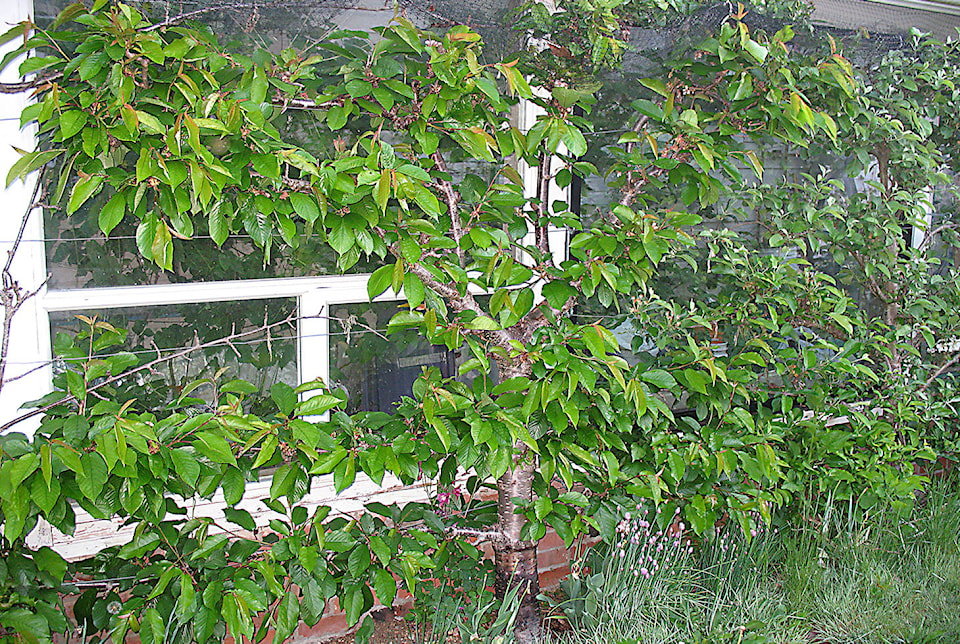By Mary Lowther
Mother’s Day has me thinking about parenting in general, and one of the most obvious and least appreciated facts of bringing up a child; our kids learn their habits from what we show them, not from what we tell them. David insists he never started drinking because his parents never used alcohol, but that he smoked because they told him how bad it was with a cigarette in their hands. As he puts it, “Our bad habits may kill us but they live on in our children.” Thankfully, good habits can do the same, and my parents were gardeners.
They were almost stereotypically British about it, but it is important to remember that while my mother did the planning and harvesting my father did most of the actual work. This is a traditional division of labour I often have to explain to David because his parents were cultivated rather than cultivating individuals.
That being said, my parents were vegetable growers. This may be because air force families move so often and fruit trees and vines take too long to grow.
Whatever the reason, when David started rhapsodising about the virtues of fruit I had no practical experience to draw on and had to resort to books and manuals, some of which can be pretty intimidating, but dedicated study allowed me to sound like I knew what I was talking about.
My regular readers, assuming I have any, might want to remember that when assuming I am an expert. I certainly convinced one member of my audience, who went out full of faith and returned with dwarf fruit trees and grape vines he confidently expected me to nurture and nourish.
I needed some time to deal with a steep learning curve and bought it by convincing David he had to build me a conservatory to plant the grapes in and espalier the fruit against. By the time the work was done I was ready for him.
Dwarf trees can be trimmed to grow no higher than one can reach, require fewer nutrients and produce fruit sooner than full sized trees.
They are best planted on a south facing wall, trained to grow on wires to support the branches when they fruit.
For a brilliant local example Lake Cowichan readers should admire the peach tree on the wall in front of Neiser’s Sales. It should be on the tourist brochures.
At home we strung wires along our south wall. We dug holes twice as big as each root ball, put a cup of fertilizer into each hole and mixed it into the soil at the bottom, then placed a sapling into each hole and refilled the soil to below the graft.
It is very important not to cover the graft.
Then we tamped down the soil to close any air spaces and watered them well. We attached each sapling to the wires and trained the branches to grow flat along them.
Then we waited for years, four of them. I was still following the instructions from books and YouTube, much of which was so conflicted that I frequently had to wing it.
For example, I think I trimmed too much off the grape vines at first because we never got any grapes the second or third years, so last year I didn’t cut so far down and have quite a few bunches coming.
I tackled pruning the trees according to the experts, desperately trying to see the difference between a fruiting spur and a leafing one. Some say to never cut off a fruiting spur because they might fruit for 10 years.
I never did get the hang of it and suspect I cut off a lot of fruiting spurs, so decided to only prune branches on the fronts and backs of the trees to train them to grow in two dimensions, flat along the wall. So far so good.
Nipping off some fruit in order to produce fewer, larger ones and to encourage yearly production was fun to do and didn’t seem to hurt anything.
After the underdeveloped fruit starts to drop, rub off all the developing fruit between those you leave on the branch so you end up with fruit growing six inches apart. This removal stimulates the remaining fruit to grow larger and the tree more likely to produce each year.
Normally, some trees when left alone will only produce every two years, but thinning the fruit tricks the tree into thinking it hasn’t produced well so it tries again next year. It also keeps branches from becoming too heavy and breaking.
I don’t feel quite so intimidated now that I’m getting fruit, even though I am still learning proper pruning technique. I need to, because David bought 80 (!) more to plant in the acreage across the road since these ones have turned out so well.
I am fairly sure that David hasn’t figured out yet that he has more confidence in my abilities than I do. I hope to keep him ignorant.
For those inspired to try for themselves, we bought a variety of nectarine called “Red/Gold” at Dinter’s [Nursery] that produces sweet, delicious fruit here in Mesachie Lake. Definitely worth all the time and trouble.
Please contact mary_lowther@yahoo.ca with questions and suggestions since I need all the help I can get.
